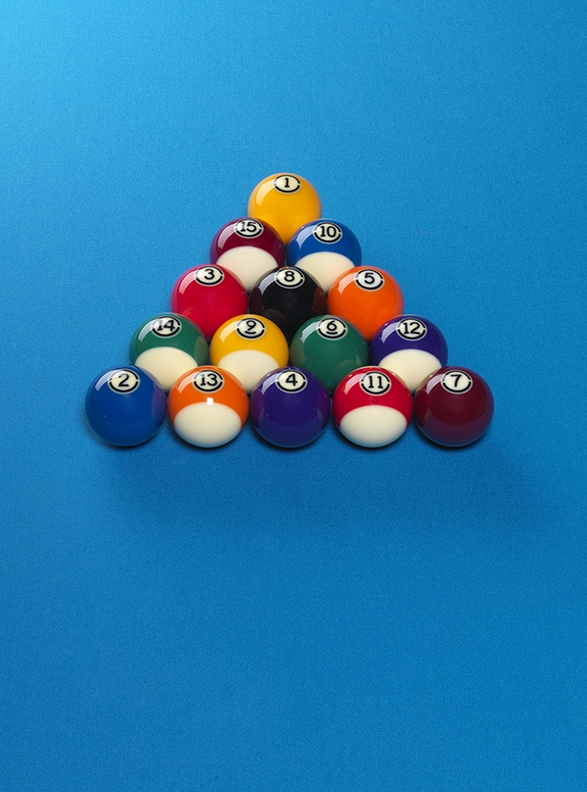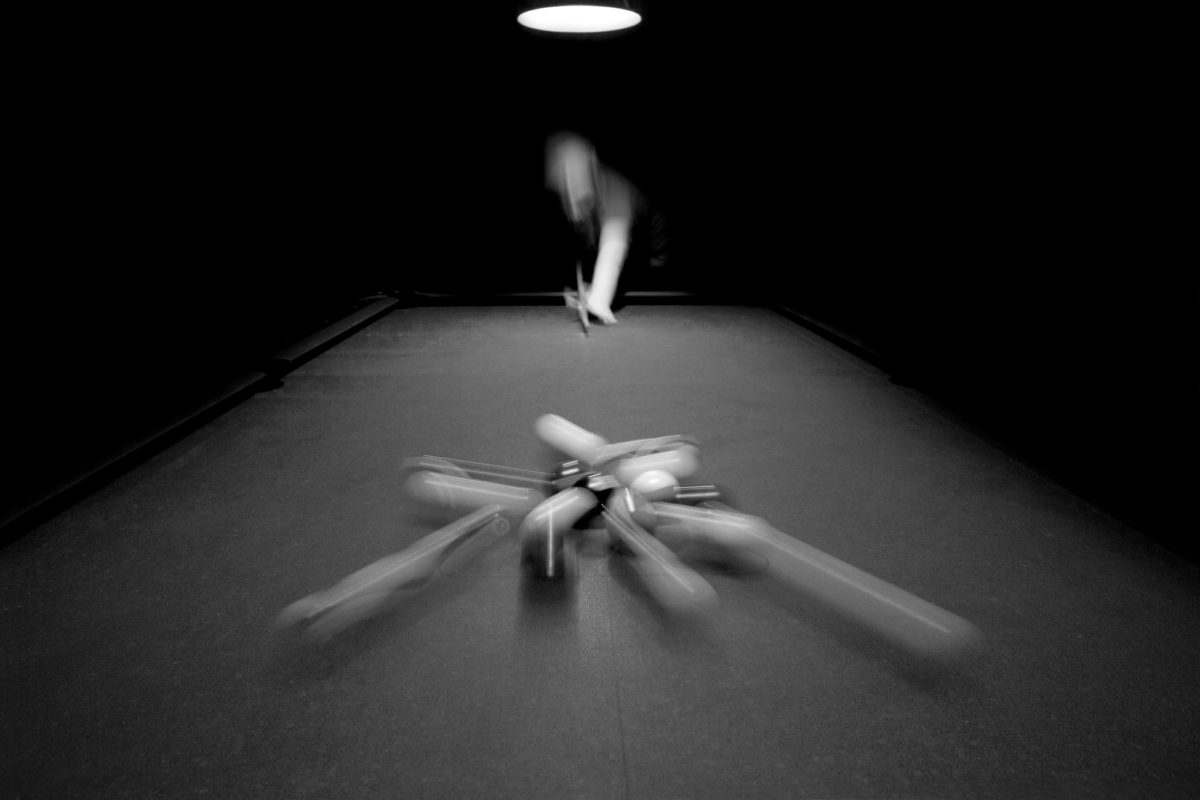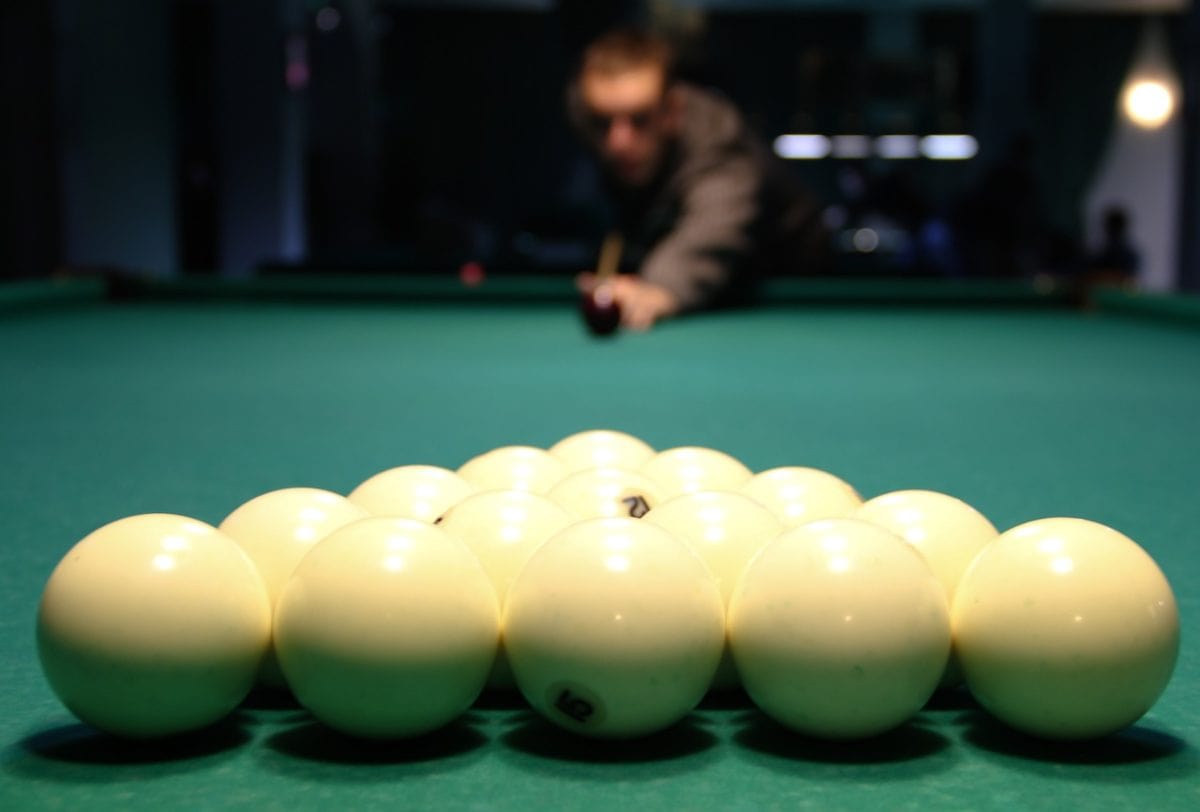
Did you know that proper installation of your cloth can prevent premature wear?
(Installation training Videos are now available to the trade)
If cloth is installed too loosely, or if it loosens on your table over time, the cloth can “bunch up” in front of the ball, thus greatly increasing the appearance of ball burns or white marks on the cloth. Simonis is meant to be installed tightly over the surface of the slate. This not only provides the best playing conditions, but it will ultimately increase the usable life of your cloth. In addition, the fact that Simonis cloth does not stretch like lesser cloths, it stays tight on the table once properly installed.
Typically, white marks left on the surface of the cloth are referred to as ball burns. Simonis’ high wool content helps to reduce the appearance of these marks. In addition, we recommend using phenolic balls to further reduce the appearance of these marks. Ball burns from polyester balls are actually marks left on the cloth from degradation of the surface of the ball itself. Phenolic balls, such as Aramith® balls (The ONLY billiard balls MADE IN BELGIUM), are much harder and are much more resistant to heat than polyester balls.
As always, the cloth and the balls should be kept clean. Any residue that has built up on the ball or on the cloth will eventually leave marks. Simple maintenance will prolong the life of your cloth, the aesthetic appearance of your table, and your enjoyment of the game.
Typically, balls are cleaned with special polishes. It is not recommended to use water to clean billiard balls. Oils from your hands as well as other compounds can build up on the balls and should be removed regularly.
The cloth can be brushed, but to remove the chalk and talc powders, it can be cleaned with the patented Simonis X-1® or it can be carefully vacuumed with a non-rotating brush-head attachment that does not allow for too much suction to be formed. Some small vacuums can pick up bowling balls, but this will only stretch the cloth on the table and possibly harm the grouting of the slates as well. You should test your vacuum and brush attachment off of the table first to make certain that it is not going to damage the play surface. Less is more in this department. After all, you are trying to remove a fine powder from a smooth cloth, so don’t overdo it. The Simonis X-1®, is a new device that will allow you to keep your cloth in great playing condition and extend the cloth’s life by actually removing the chalk dust from the cloth.
The cloth can also be wiped with a damp (not wet) clean towel. This should only be done after the table has been vacuumed otherwise the dampness may cause the chalk dust to clump together (think of it as adding water to dry clay). Once the dampness has completely evaporated, a quick brushing or a few strokes with the Simonis X-1® is all you will need before playing as moisture will cause the fibers in the cloth to stand up and a quick brushing will smooth things out.
Stains on the cloth? Contact your local Dry Cleaners as they have some pretty interesting and effective techniques to resolve these incidents. Remember, Simonis is a worsted wool, so be sure to mention that fact.


What are ball burns?
Marks left on the surface of the cloth that are usually white in color are referred to as ball burns. Simonis’ high wool content helps to reduce the appearance of these marks, and we also recommend using phenolic balls to further reduce the appearance of ball burns. Ball burns from polyester balls are actually marks left on the cloth from degradation of the surface of the ball itself. Phenolic balls are much harder and are more resistant to heat than polyester balls.
As always, the cloth and the balls should be clean. Any residue that has built up on the ball will leave marks on the cloth. Simple maintenance will prolong the life of your cloth, the aesthetic appearance of your table and your enjoyment of your game!
